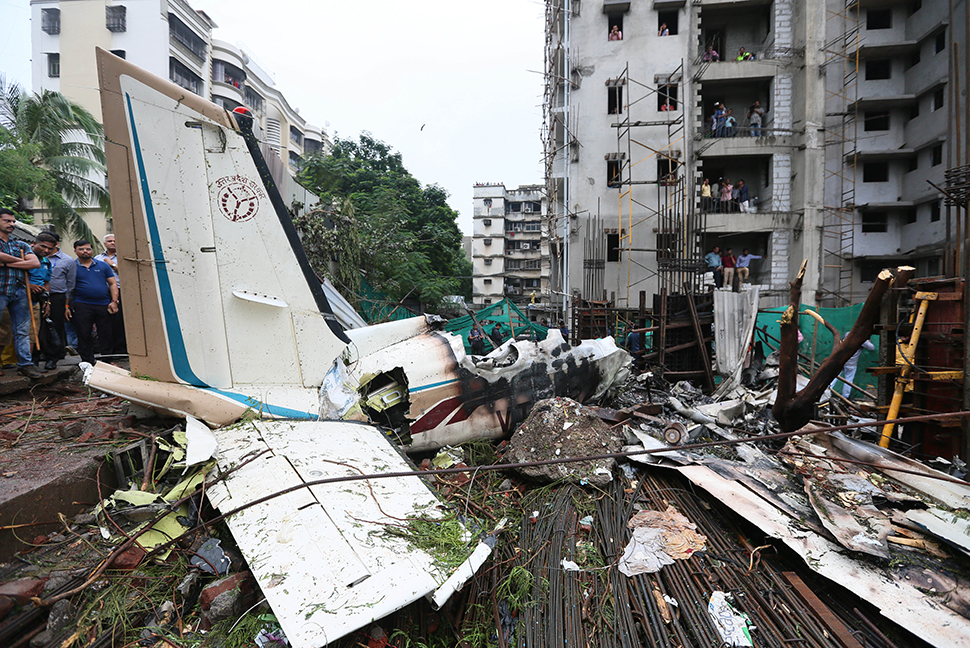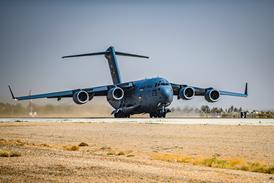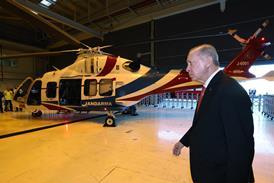We put them under the spotlight.
2018
18 February
Daher-Socata TBM 700 (N700VX). Totally destroyed by post-impact fire when it apparently went out of control and crashed during the final stage of an ILS approach to Runway 23 at Evanston, USA, coming down in scrub about 2,500m (8,200ft) short of the runway threshold in snow and poor visibility. The single pilot and passenger were killed. The accident happened in daylight. Weather was icy, with snow and freezing fog. The aircraft was operating a flight from Tulsa, Oklahoma.
22 February
Cessna 441 Conquest (N771XW) operated by Prospect Aviation. The aircraft was totally destroyed when it crashed in fields near Owasco, Indiana some 20 minutes after take-off from Eagle Creek Airpark, Indianapolis. The point of impact was about 50 miles north-northwest of Indianapolis. The accident happened in darkness (1939L) and IMC during a flight to Green Bay, Wisconsin. Shortly after take-off the aircraft deviated from its assigned heading and altitude. When ATC queried this the pilot replied that the aircraft was “out of control”. He turned onto a heading of 90° and advised ATC that he had a “trim problem and difficulty controlling the aircraft but that he had it back to straight and level now”. The flight was given a turn onto a heading of 310°, followed by a clearance to climb to and maintain 13,000ft. The pilot was then instructed to contact Chicago Centre. The pilot checked in with the sector controller stating that he was climbing from 10,600ft to 13,000ft. He was cleared to climb to FL200 followed by a further climb to FL230. The pilot was instructed to change frequencies. The pilot then transmitted that “he needed a minute to get control of the aircraft” and that he was “having difficulty with the trim”. Contact with the flight was then lost. The pilot and two passengers on board died in the accident.
11 March
Bombardier Challenger 604 (TC-TRB), operated by Basaran Holdings, was destroyed when it went out of control and crashed near Shahr-e Kord, Iran while en route from Sharjah, UAE to Istanbul, Turkey. All three crew and eight passengers were killed. Prior to the accident, the aircraft appeared to be in normal flight at FL360. The pilot then requested climb to FL380, but at FL377 it entered a descent that continued until impact with the ground. A disparity between the two airspeed indicators had developed, the left increasing and the right decreasing. An “EFIS COMP MON” warning was displayed. The overspeed aural warning activated and the crew set throttles to idle. The stall warning sounded and stickshaker and stickpusher operated. This caused the aircraft to nose down, but the captain seemed still to believe that the aircraft was overspeeding, and pulled back on the control column. The aircraft stalled and both engines flamed out before impact. The co-pilot tried three times to get the captain to follow the EFIS COMP MON checklist procedure but the captain refused each time. The passengers included Mina Basaran, the daughter of Huseyin Basaran, whose business group operated the aircraft, and seven of her friends who had travelled to Dubai to celebrate Mina’s forthcoming marriage. Ms Basaran was described in the press as a “wealthy Turkish socialite”. Her friends were active in the fashion and design business.

All 11 occupants died in the March 2018 crash of this Challenger 604
AirTeamImages
15 April
Cessna CitationJet CJ1 (N525P) crashed into high ground near Crozet, Virginia, USA. It was night, but no flightplan was filed for the local flight from Richmond to return to its base at Staunton in the same state. The aircraft took off at 2035L and climbed to about 11,500ft where it levelled. However, about 4min later, it began to descend before levelling off at around 4,300ft and remaining at that altitude for 9min. It then began a descending left turn which continued until radar contact was lost. The pilot, the only person on board, died in the crash.
28 June
Hawker Beechcraft King Air 90 (VT-UPZ) was destroyed by impact and post-impact fire when it crashed on a building site in the Ghatkopar district of Mumbai, India, apparently while returning to Juhu Airport, Mumbai following a post-maintenance test flight. The two crew and two aircraft engineers on board died in the crash, and one person on the ground was killed. The accident happened in daylight.

Ghatkopar building site crash
Divyakant Solanki/EPA-EFE/Shutterstock
29 July
Hawker Beechcraft King Air 90 (PP-SZN) operated by CISA Trading. It was destroyed by post-impact fire when it crashed inverted following an attempted landing at Campo de Marte Airport, in São Paulo, Brazil. The aircraft had reported “an undercarriage problem” and had made two low passes along the runway before apparently returning to land. The accident happened in daylight (1810L) VMC, killing one pilot and injuring the other. All five passengers were injured but survived. The passengers are understood to include Nereu and Geraldo Denardi, the founders and owners of Videplast, a packaging manufacturer. The aircraft was operating a flight from Videira, in Santa Catarina, Brazil.
15 September
Beechcraft King Air 90 (PR-RFB) operated by Gambatto Veiculos. The aircraft was destroyed by fire when it crashed on a wooded hillside in Linha Serra Alta, near Ipumirim, Santa Catarina, Brazil towards the end of a ferry flight from Florianopolis to Chapeco. The point of impact was about 40km (25 miles) east of Chapeco, and the pilot, the only occupant, was killed. The accident happened in daylight (1215L).
25 September
Beechcraft King Air 200 (N241CK) operated by Kalitta Charters. The aircraft was totally destroyed when it crashed during an RNAV (area navigation) approach to Runway 06 at Oscoda, Michigan. The pilot, the only occupant, was killed. The point of impact was densely wooded terrain in Wilber Township about four miles southwest of the airport. The accident happened in darkness (0613L) and IMC with overcast at 400ft. The aircraft was positioning from Willow Run Airport, Detroit.
27 September
Dassault Falcon 50 (N114TD) operated by ValCon Holdings overran the end of runway 19 on landing at Greenville Downtown Airport, South Carolina. After leaving the runway it crossed a 70m grass safety area before falling down a 12m high bank, eventually coming to rest on Airport Road about 150m from the end of the runway. The accident happened in daylight (1346L) VMC. The aircraft was inbound from St Petersburg, Florida. The aircraft touched down normally, the thrust reverser on the centre engine and the spoilers deployed, but the controllers report that they watched as the aircraft failed to decelerate. First responders reported that all three engines were operating at full power for at least 20 minutes after the accident with one engine running until about 40 minutes after the accident. The pilot occupying the left hand seat held an ATP certificate with a type rating for the Falcon 50 but a limitation for second-in-command only. The right seat pilot held a private pilot certificate with ratings for single and multi-engine landplanes. Both pilots were killed and there were no passengers.
24 October
Piper PA-31T Cheyenne (N555PM) belonging to the Bulldog Flying Club in South Carolina, USA. The aircraft disappeared during a flight from Andrews, South Carolina to Governors Harbour, Bahamas and is believed to have crashed into the Atlantic Ocean some 100 miles southeast of Charleston, South Carolina. The aircraft took off from Andrews at 1047L and climbed to FL250. The flight had appeared to be proceeding normally in VMC until 1119L when the pilot told ATC that he had an “emergency”, after which contact was lost. The pilot and all four passengers are missing.
18 November
Cessna 441 (N441CX) operated by Bismarck Air Medical. The aircraft was destroyed after it went out of control and broke up in flight while climbing through about 14,000ft northwest of Mandan, North Dakota shortly after take-off from Bismarck. The accident happened in night (2240L) VMC. The aircraft was operating a flight to Williston, North Dakota to collect a patient. The pilot and the two other people on board were killed.
30 November
Cessna CitationJet CJ2 (N525EG) operated by EstoAir of Memphis, Indiana. The aircraft was destroyed when it crashed in woodland about 4km southwest of Memphis shortly after take-off from runway 36 at Clark Regional Airport, Jeffersonville. The accident site is about 12km north northwest of the airport. The aircraft had climbed to 6,000ft AMSL but was then seen on radar to begin a descending left turn, which continued until impact with the ground. The pilot had previously been given a frequency change, which he acknowledged, but he did not report on the new frequency and no distress message was heard. The accident happened in daylight (1028L). The aircraft was operating a flight to Midway International Airport, Chicago, Illinois. The pilot and the two passengers were killed.
20 December
Cessna Citation V (N188CW) operated by Hill Aircraft and Leasing. The aircraft was destroyed when it crashed shortly after take-off from Runway 08 at Fulton County Airport, Atlanta, Georgia, coming down in English Park about 2km to the northeast. The accident happened in daylight (1211L) but IMC with overcast at 600ft. The aircraft was operating a flight to Millington-Memphis Airport, Memphis, Tennessee. The pilot and three passengers were killed.
2019
29 January
Beechcraft King Air 200 (N13LY) operated by Guardian Flight. The aircraft disappeared towards the end of a positioning flight from Anchorage to Kake, Alaska to pick up a patient, and is believed to have crashed into the sea about 18nm northwest of its destination. The aircraft had been cleared for an RNAV (area navigation) approach to Runway 11 at Kake. It subsequently crossed waypoint Zolko (IAF) at 5,000ft in a gradual descent towards Jojoe (IF) but then entered a right turn and a steep descent. There was no distress call. The accident happened in darkness (1811L) and cloud. The pilot and both passengers were killed.
18 March
Israel Aircraft Industries Westwind 1123 (N990PA) operated by N4MH. The aircraft went out of control as it was landing on Runway 18 at Sundance Airpark, Oklahoma City and it came to rest to the left of the runway inverted. The accident happened in daylight (1531L) VMC. The aircraft was returning to its base following a flight to Panama City, Florida. An initial inspection found that the left thrust reverser was unlatched and open while the right was closed and latched. Both pilots were killed.
23 March
Beechcraft King Air 200 (A2-MBM) operated by Major Blue Air. The aircraft was totally destroyed by impact and post impact fire when it collided with the flying club facilities and control tower during a low pass over Matsieng Airport, Gaborone, Botswana. This destroyed the buildings and 13 cars parked outside. The accident happened in good visibility at dusk (1820L). In local press reports it was claimed that the pilot had earlier had an argument with his wife and had attempted to gatecrash a private function at the Matsieng Flying Club clubhouse. Press reports further allege the pilot had then taken the King Air from Sir Seretse Khama International Airport, Gaborone and returned to Matsieng, where he flew a number of low passes over the buildings there and along runway 36 before crashing into the club house. The occupants of the buildings, concerned about his manoeuvres, had evacuated the club and tower before the crash. The pilot, alone on the aircraft, was killed, but there were no deaths or injuries on the ground.
13 April
Rockwell Sabreliner (N265DS) operated by Classic Aviation. The aircraft crashed in woods near New Albany, Mississippi while en route from Oxford, Mississippi to Hamilton, Alabama. The pilot had told ATC that they had “electrical, AC voltage problems” shortly before contact with the flight was lost. The accident happened in daylight (1514L) but IMC. Both crew and the only passenger were killed.
24 April
Cessna Citation II (D-IADV) operated by Advance Air. The aircraft, on a training flight, apparently landed short of runway 13 at Siegerland Airport, Siegen, Germany. The undercarriage failed and the aircraft ended up on fire on the runway. Both pilots were killed.
5 May
Bombardier Challenger 600 (N601VH) operated by Compania de Aviacion y Logistica, Mexico. The aircraft crashed in desert near Monclova, Mexico en route from Las Vegas, Nevada to Monterrey, Mexico. It is reported that, after take-off, the aircraft had climbed to FL370 and maintained this altitude for about 1h 10min. It then seems to have climbed to FL390 and briefly levelled off before continuing the climb to FL410. Contact with the flight was then lost. No distress call was reported. Photographs of the accident site suggest that the aircraft pancaked into the ground with very little forward motion. The accident happened in daylight (1740L). The aircraft had reportedly been chartered to take a group from Monterrey to watch a boxing match in Las Vegas before returning. All three crew and ten passengers died.
22 May
Cessna Citation S/II (N311G) operated by Zeus. The aircraft crashed in a field immediately after take-off from Runway 07 at Indianapolis Regional Airport, Indiana, coming down about 0.5 miles from the airport. After take-off the aircraft had begun a left turn onto a heading of 320° as cleared and climbed to a height of about 1,400ft before entering a rapid descent. The accident happened in daylight (1245L); weather, wind 170deg/9kt, gusting to 14kt, visibility 10sm, cloud, scattered at 600ft, broken at 4,000ft and overcast at 9,500ft and temperature and dew point 16C. The aircraft was operating a flight to Minden-Tahoe Airport, near Carson City, Nevada. The pilot and passenger were both killed.
24 May
Cessna Citation Encore (N832R) operated by Jet Sales of Stuart. The pilot had been contracted to fly the pre-owned but newly purchased aircraft from St Louis regional airport, Illinois, to Fort Lauderdale Executive airport, Florida, for avionic work to be carried out. When en route at FL390 over Georgia the pilot stopped communicating, but the aircraft flew on at the same altitude, continuing beyond Fort Lauderdale over the sea. Two F-15s intercepted it and reported that the pilot was slumped over the controls. The aircraft eventually pitched down and descended into the sea about 310 miles east of Fort Lauderdale, probably when its fuel ran out. The aircraft had been purchased by a new owner two days prior to the accident, and had undergone a progressive inspection two days before. The pilot was killed.
10 June
Cessna 425 (N622MM) operated by Santa Fe Investments. The aircraft was destroyed when it collided with a 25m high grain silo and crashed about 5km north northeast of Butler, Missouri. The aircraft was operating a flight from Vero Beach, Florida to Olathe, Kansas. The aircraft developed “engine problems” en route and was diverting to Butler when the accident happened. Descending through 17,000ft inbound to Olathe, the pilot reported he was having problems reducing the power on the right engine. Descent was continued but at about 13,200ft AMSL, the pilot told the controller that he was going to lower the undercarriage and proceed direct to Olathe. He also stated that he would have to shut down the right engine when he was in range of the airport. Passing through about 12,900ft AMSL, the pilot told the controller that the right engine was still stuck at full power and that he was going to have to shut it down. Passing through 7,800ft the pilot asked for vectors to the nearest airport and was directed to Butler, about 8 miles away. After descending through 5,400ft, the pilot told the controller he had the airport in sight. Passing through 4,000ft, the controller advised there would be a possible tailwind if landing on Runway 18, and the pilot said he would go-around and set up for runway 36. Passing through about 2,900ft, the controller asked the pilot if he had the airport in sight and the pilot responded “I am trying to get this thing under control”. Passing through 1,800ft ASML – about 900ft above the airfield elevation – the pilot told the controller, “she’s going down”, and stated that he was going to try to land on Highway 69. Conditions were daylight VMC. A witness near the accident site saw the aircraft low and “nosing down toward a field”. It crashed into the grain silo, about a mile from the highway and about four miles from the airport. The pilot, the sole occupant, was killed.
6 August
Citation Mustang (CC-ANR) operated by Servicios Generales Astudillo. The aircraft was destroyed by fire after it apparently undershot runway 18 on final approach at Maria Dolores Airport, Los Angeles, Chile; coming down about 300m short of the runway. The accident happened at dusk (1820L) but in VMC. The aircraft was operating a flight from Concepcion, Chile. The pilot, the only occupant, was killed.
1 September
Beechcraft King Air 350 (RP-C2296) operated by Pacific Global One Aviation. The aircraft went out of control and crashed among houses in Pansol, Calamba, Philippines towards the end of an ambulance flight from Dipolog City, Zamboanga del Norte to Manila International Airport. The crash occurred about 50km south-southeast of the airport. A video of the accident appears to show the aircraft coming out of the cloud in a steep descent. It begins to level off close to an area of high ground but then enters a tight descending left turn. The aircraft continues through about 180° while rolling almost inverted just before impact. The accident happened in daylight VMC but with a ragged overcast ceiling estimated at between 2,000 and 3,000ft. The two crew and all seven passengers were killed.
2 September
Textron Aviation Hawker HS125 (XB-PTW) operated by a Mexican company. The aircraft hit trees while attempting to land on a farm road at night near Nueva Cajola in Guatemala, and was destroyed by fire. Both pilots died. It is believed to have been carrying contraband drugs.
2019NBAA
Read all the latest news and information from the 2019 NBAA show on our dedicated page


























